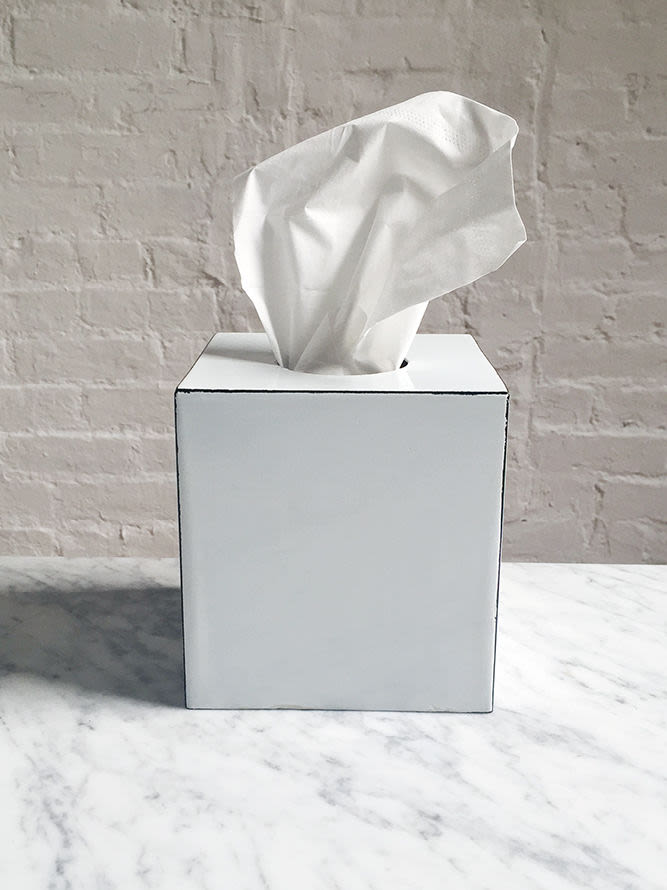Red noses are cute in December, when they’re attached to fictional reindeers and not your very real human face. But as winter storms on, and temperatures keep dropping into February, and flu season once again rears its ugly head (It’s probably the flu, right? And not something worse?), a red nose becomes a little less jolly.
“There are a lot of reasons we see chapped noses this time of year,” says dermatologist Dr. Patricia Wexler. “It’s common in patients who are frequently blowing and rubbing their noses, particularly in places with dry weather and cold winds. And it’s worsened by conditions such as eczema, allergies, and medical conditions such as Sjogren’s syndrome.” While Dr. Wexler has an idea or two on how you should treat a chapped nose, it all starts with being gentle—not rubbing too hard, or trying to scrub flaky skin off where you’re already dry. Below, her best tips for nipping a chapped nose in the bud (and what to do if you’re too late).
Before It Gets Chapped
Blow your nose the right way. Dr. Wexler recommends keeping gentle tissues on hand: Kleenex and Puffs both make versions infused with aloe and vitamin E. And when you do have to blow your nose, pat, don’t rub, the tissue to clean it.
Stay hydrated. “Cold medicines will dry up a cold,” says Dr. Wexler, “but your skin needs lots of hydration to counteract the effects of the antihistamine.” She recommends taking measures like investing in a humidifier with a cool mist (this one’s cheap and great), drinking warm fluids, and using saline spray to keep the inside of your nose moist.
Protect the perimeter. Protecting your nose from the elements will minimize moisture loss and irritation from windburn. On top of your protective day cream, Dr. Wexler recommends covering where you get chapped with a scarf when you’re going out in freezing temperatures. (Or try a balaclava—they’re practical and trending.)
When The Deed’s Been Done
Avoid potential irritants. While the blackheads on your nose might occupy most of your thoughts on any regular day, they shouldn’t be your main concern right now. “Avoid salicylic acid and other exfoliants that could dry out your skin and cause more irritation,” says Dr. Wexler. You should also avoid heavily fragranced creams or things with lots of essential oils. (While Weleda Skin Food might smooth your dry patches, you don’t want to use it where you’re already feeling raw.)
Moisturize on the outside... The name of the game is barrier support. Look for ingredients like ceramides, squalane, lipids, and vitamin E to replenish your skin’s natural oils that might have been stripped by harsh tissues (and even harsher winds). She has a few ideas about the creams you should be reapplying: “Neutrogena’s Lip and Nose Repair Balm instantly relieves a chapped nose, and repairs it over time with beeswax,” says Dr. Wexler. Another favorite is Aveeno Skin Relief Moisture Repair Cream, which features ceramides and a triple oat complex. The soothing combo will feel good on desperate skin.
...And the inside. No, not with ingestible hyaluronic acid—Dr. Wexler recommends coating the inside of your nose with Aquaphor or Vaseline to keep it physically protected. “Squeeze out a small amount on the tip of your finger,” she recommends, “and disperse it between each nostril.” The final step? Purel-ing your hands.
Hydration helps, too. It’s a bummer, and it certainly feels counterproductive, but it is a fact that every time you blow your nose all your moisturizer is wiped straight off. Keep hyaluronic acid or aloe on hand to help hydrate your skin. “You can even reapply aloe gel after each time you blow your nose for quicker healing,” suggests Dr. Wexler. It feels light on skin and absorbs quickly, and is unlikely to irritate your sensitized nose.
Shop everything you need to soothe a chapped nose:
Photo via ITG

